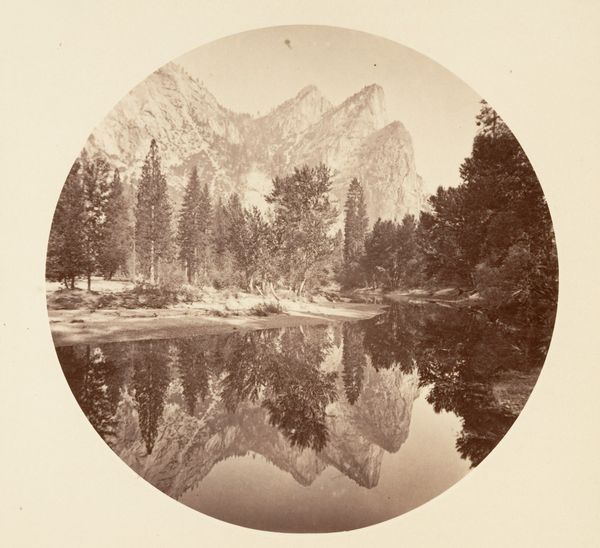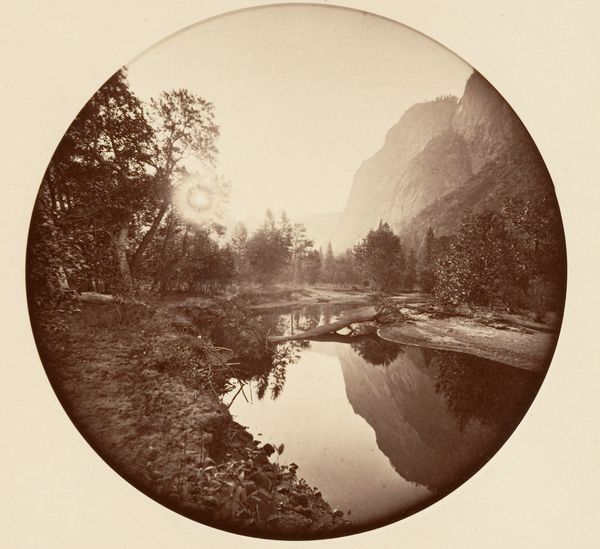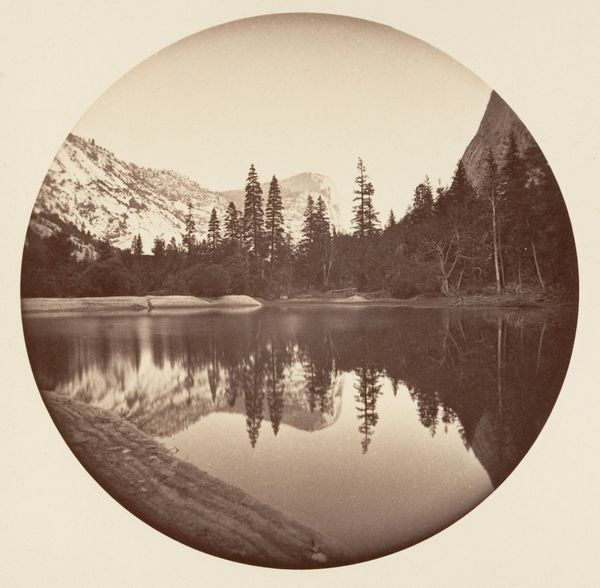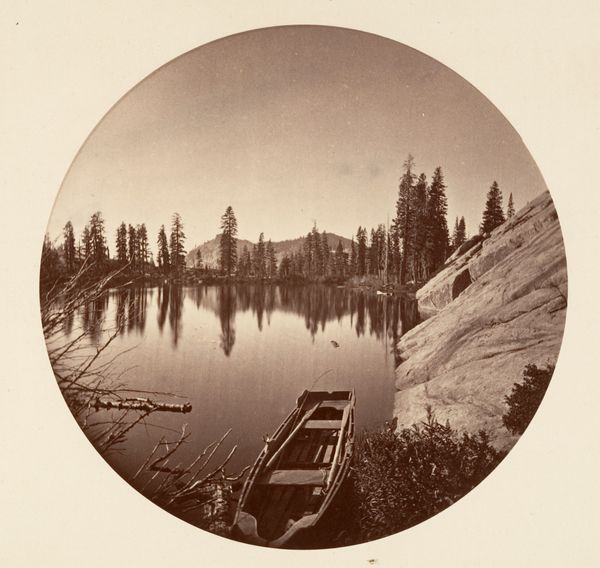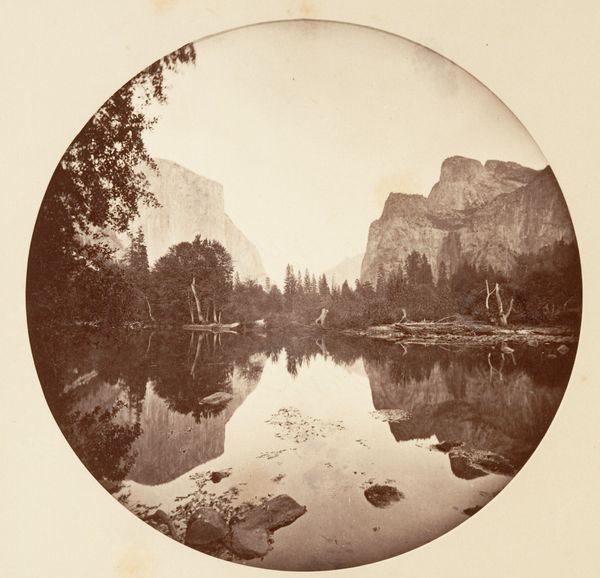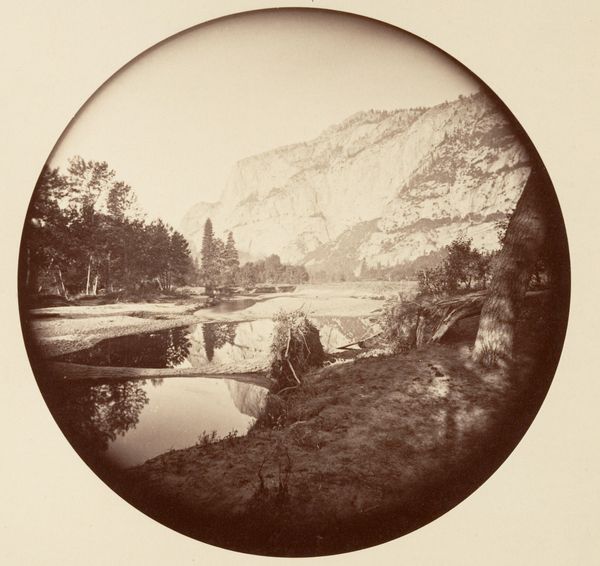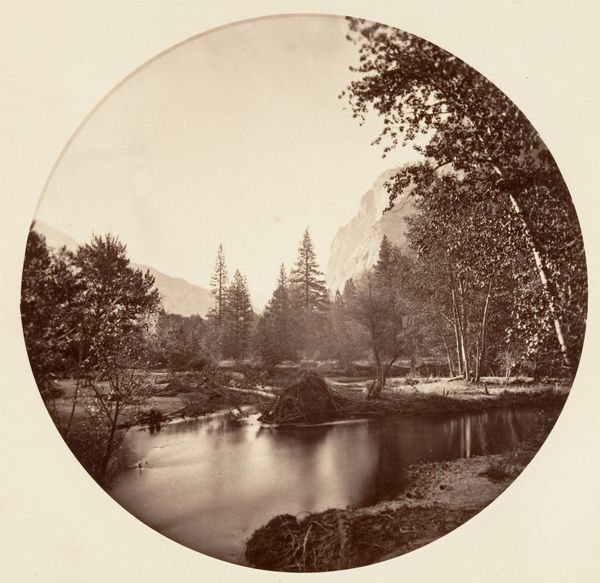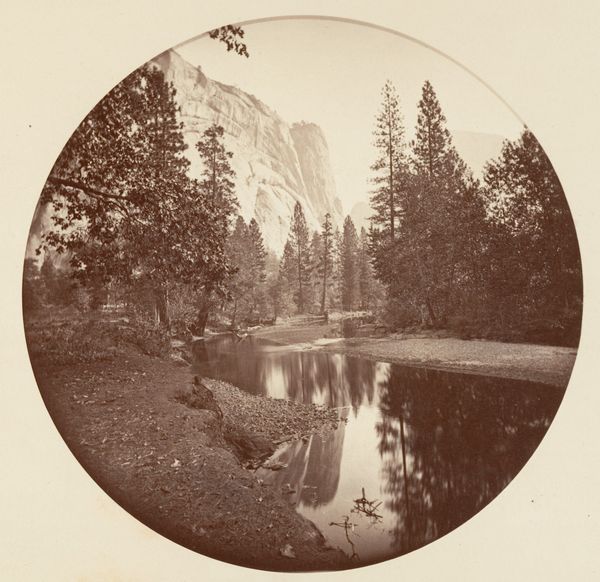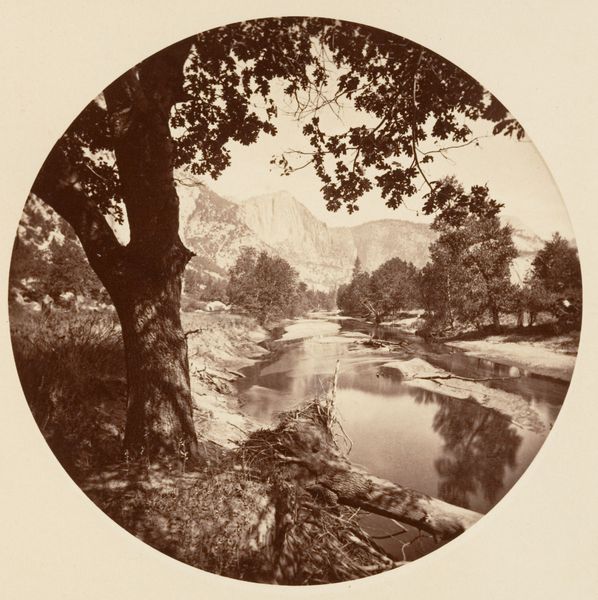![[Yosemite National Park, California] by Carleton E. Watkins](/_next/image?url=https%3A%2F%2Fd2w8kbdekdi1gv.cloudfront.net%2FeyJidWNrZXQiOiAiYXJ0ZXJhLWltYWdlcy1idWNrZXQiLCAia2V5IjogImFydHdvcmtzL2VmNjYxYTBlLWI2MDgtNDNhNS1iNDc3LTZlODlkNzg0YjEzNS9lZjY2MWEwZS1iNjA4LTQzYTUtYjQ3Ny02ZTg5ZDc4NGIxMzVfZnVsbC5qcGciLCAiZWRpdHMiOiB7InJlc2l6ZSI6IHsid2lkdGgiOiAxOTIwLCAiaGVpZ2h0IjogMTkyMCwgImZpdCI6ICJpbnNpZGUifX19&w=3840&q=75)
Dimensions: Image: 12.5 x 12.5 cm (4 15/16 x 4 15/16 in.), circular Album page: 24 x 25.1 cm (9 7/16 x 9 7/8 in.)
Copyright: Public Domain
Editor: This is Carleton Watkins’ photograph, *Yosemite National Park, California*, created between 1876 and 1880. It's an albumen print, presented in this very distinctive circular frame. It feels very serene, almost timeless, the way the mountains reflect in the still water. What do you see in this piece? Curator: I see more than just a landscape. The circular format itself evokes the camera lens, yes, but also perhaps a celestial orb, lending the scene a sense of the infinite and the eternal. And within that frame, notice how Watkins has positioned that fallen tree in the foreground. It’s a potent symbol of the cyclical nature of life and death, of decay and rebirth. Editor: That’s fascinating, I hadn't considered that. So, the fallen tree isn't just a detail of the landscape? Curator: Not at all. Think of it as a memento mori, a reminder of mortality set against the grandeur of the enduring mountains. It encourages us to contemplate our place within this larger, timeless vista. And what of the reflections? Editor: Well, they double the landscape, creating a sense of depth but also a slightly unreal quality. Curator: Precisely! Reflections have long been used to symbolize introspection and the subconscious. Watkins seems to be inviting us into a dialogue with nature and with ourselves, a visual echo of the Transcendentalist movement. It calls the viewer to see what lies beneath the surface, both literally and metaphorically. Editor: That makes me think about how photography itself captures and reflects reality, a kind of second nature. Curator: An excellent observation. Watkins uses photography, not just to document Yosemite, but to invite reflection on our relationship with the natural world. His careful selection of symbolic elements adds a depth beyond the merely representational. Editor: This has given me so much to think about. I never would have noticed those details without your insights into their symbolism. Curator: Every element whispers stories if we but lend an ear to hear them. The cultural memory preserved through such careful photographic work helps in shaping and understanding what the world once was and, possibly, can still be.
Comments
No comments
Be the first to comment and join the conversation on the ultimate creative platform.

